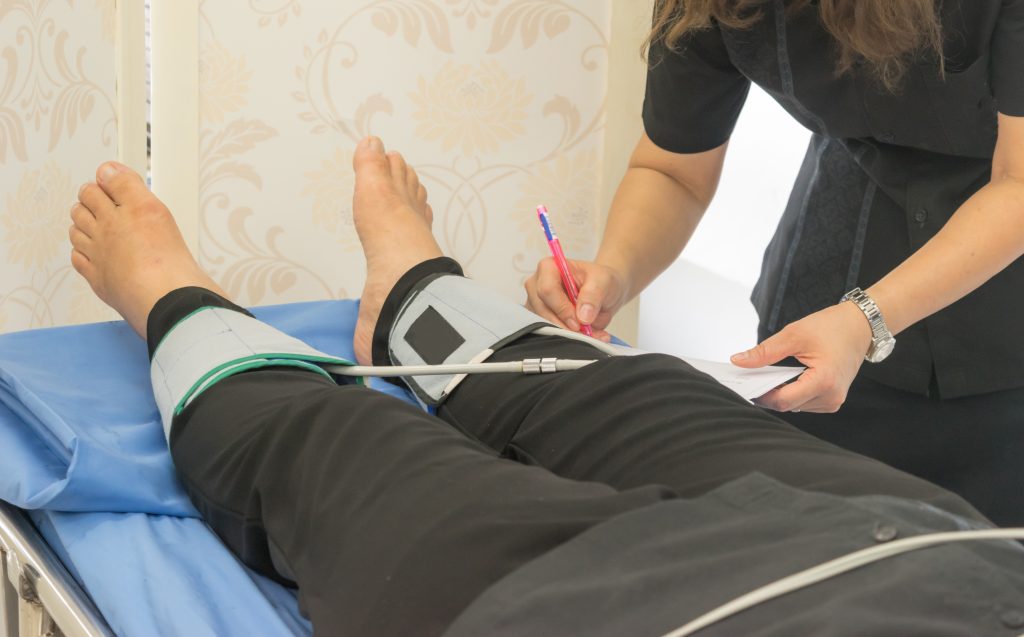When practicing wound care, promoting quick and effective healing is top priority. Without proper care, wounds may become chronic or worsen, potentially leading to amputation. It’s important to identify and treat conditions that put patients at risk for wounds, such as peripheral artery disease, also known as PAD. PAD is a circulatory condition that affects millions of people. It hinders proper blood flow to the legs and can cause gangrene and amputation if not properly treated.
September is PAD Awareness Month, so it’s a valuable time to refresh your knowledge about the symptoms and effects of the disease. To assist you, Vohra has put together some helpful resources below about PAD.

Wound Care Certification
What is PAD?
Peripheral artery disease (PAD) is a chronic circulatory condition that causes peripheral arteries to narrow or become blocked, preventing proper blood circulation to organs, arms, and most commonly legs. PAD affects 8-12 million Americans, including one in eight Americans aged 60 and older. The most common risk factors for PAD are smoking, old age, and diabetes mellitus. Other risk factors include hypertension (high blood pressure), hyperlipidemia (high cholesterol), renal insufficiency, and non-Hispanic black race.What are the symptoms of PAD?
The most prevalent PAD symptom is claudication, or exercise-induced leg cramping. Claudication most commonly occurs in the calf, although it can also present in the thigh, foot, buttock, and hip.
Other symptoms commonly reported by PAD patients include:
- Shiny skin and hair loss on legs
- Atypical pain in the lower extremities
- Weakness or numbness in the legs
- Sores or wounds on the lower body that won’t heal
- Pale or bluish color in the legs
How is PAD diagnosed?
PAD is diagnosed by assessing a patient’s medical history and conducting a physical exam. Patients with PAD typically have a history of intermittent claudication and/or lower extremity pain. They may also experience common PAD risk factors, such as smoking or diabetes.
The Ankle-Brachial Index (ABI) is the standard way to check for PAD. The ABI detects arterial narrowing or blockage by comparing blood pressure in the ankle to blood pressure in the arm. A handheld Doppler can be used to help locate pulses. An ABI of 0.9 or below indicates PAD.
Other indicators of PAD include:
- Weak or absent pulses in the legs or feet
- Coolness of lower extremities, or lower temperature in one leg
- Presence of bruits (the sound of blood moving through a narrowed artery)
- Slow capillary refill
- Distal pallor on elevation

How do you treat PAD?
If PAD is left untreated, it can lead to gangrene and limb amputation, so early diagnosis and treatment is critical. PAD is characterized by disrupted blood flow, so restoring circulation is the primary treatment goal. This is commonly done using angioplasty, which is a minimally invasive procedure that can help widen arteries that are blocked or narrowed. This is particularly important in geriatric patients since PAD patients aged 65 and above are 2-3 times more likely to undergo amputation.
For PAD patients that have developed gangrene, the area should be kept dry unless infected. In cases of infection, debridement may be advised. If PAD is significantly severe, treatment may be palliative in nature.
The Importance of Awareness
PAD is a prevalent disease that affects millions, and understanding its symptoms and effects is a valuable way to enhance your knowledge of wound care. To increase awareness about PAD and other components of wound development and treatment, Vohra has created our Wound Care Education and Certification program. This program includes 13 modules on effective wound care, with topics including Acute & Chronic Wounds, Atypical Wounds, Preventing Rehospitalization, and PAD.
Vohra Wound Physicians is the nation’s most trusted wound care specialty practice. Founded in 2000, Vohra works with nearly 3,000 skilled nursing facilities and uses innovative, proprietary methodologies and technologies to provide superior wound healing to patients.


